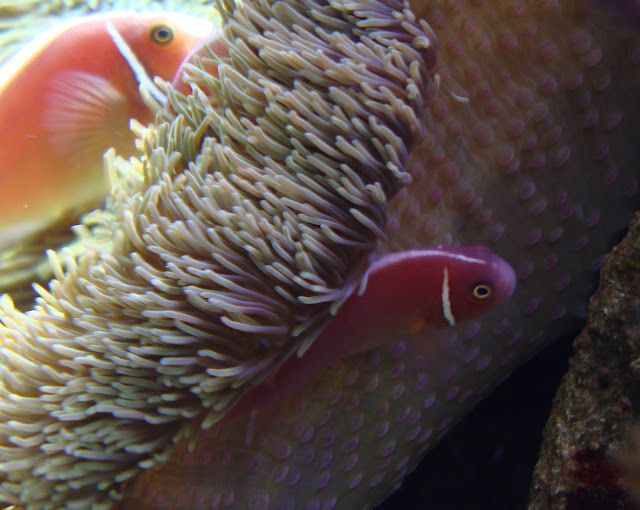So lets hear about some advanced anemone keeping. I know a few of us in the club have taken on some of the large rarer and delicate host anemones like the S. gigantea or the H. magnifica.
Paul (reefkeeper2) Has one of the most beautiful, healthy giganteas in captivity that I know of. Before the last meeting I brought over 6 small tank raised pink skunks to add to his breeding pair. They jumped right into the huge anemone and started working out the hierarchy of this new family group. In the wild there are often more than two pink skunks in a gigantea possibly because they need a group to defend it. Not much is known about how those family dynamics translate to the tank where predator and food pressures are so different.
So far he reports that 2 of the new clowns wander the tank durring the day with 6 mostly keeping to the anemone. At night they all seem to pile into it for sleeping.

Paul (reefkeeper2) Has one of the most beautiful, healthy giganteas in captivity that I know of. Before the last meeting I brought over 6 small tank raised pink skunks to add to his breeding pair. They jumped right into the huge anemone and started working out the hierarchy of this new family group. In the wild there are often more than two pink skunks in a gigantea possibly because they need a group to defend it. Not much is known about how those family dynamics translate to the tank where predator and food pressures are so different.
So far he reports that 2 of the new clowns wander the tank durring the day with 6 mostly keeping to the anemone. At night they all seem to pile into it for sleeping.
Last edited:

